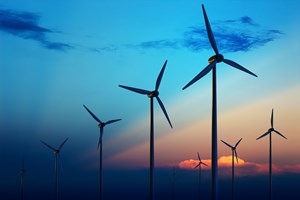CERAWeek by S&P Global 2023: U.S. offshore wind is happening now, not later
(WO) —There was no shortage of clean energy sessions at CERAWeek by S&P Global 2023. While much of the conference was dominated by oil and gas companies, Thursday’s session, entitled “U.S. offshore wind: Surging power,” informed attendees of the emerging opportunities that offshore wind in the U.S. has to offer.
Moderated by S&P Global’s Eduard Sala de Vedruna, the company’s Clean Energy Technology Lead, the session answered key questions that many in the industry have regarding this largely untapped sector in the U.S. Speakers David Hardy, CEO of Ørsted Americas; William Hazelip, President of National Grid; Sam Eaton, CEO of RWE; and Doreen Harris, President and CEO of NYSERDA, explained why U.S. offshore wind is important, what’s driving growth, and spoke about opportunities emerging in the near future.
Offshore wind’s importance to energy, job security and decarbonization. Vedruna opened dialogue with a loaded question: “Why is offshore wind important?” While each speaker pointed to different advantages that this form of renewable energy can offer, they all agreed that offshore wind could be the key to boosting energy security, keeping the job market alive, and reaching net zero by 2050.
Harris explained that offshore wind allows companies and states to adhere to strict climate laws. According to Hardy, offshore wind’s importance lies in its efficiency, as the CEO believes that the power source is a “solution for high population density coastal communities.” Since highly populated coastal towns lack the resources to host other kinds of renewable power, offshore wind seems to be these regions’ only option.
To Eaton, offshore wind’s main importance is its propensity for decarbonization. He pointed out that companies can’t pursue opportunities in LNG or carbon capture and storage (CCS) with only solar and onshore wind. These processes require robust energy; according to Eaton, offshore wind is essential to supplying these operations with low-carbon power.
Of course, a major talking point surrounding renewables concerns job displacements across the oil and gas industry. However, Hazelip thinks that offshore wind could be a silver lining. Fossil fuel professionals have transferrable skills that make them perfect for working in offshore wind.
Scale and experience will drive offshore wind growth in the U.S. The panel spoke about potential risks involved with being a “first mover” in a new industry. While the learning curve may appear steep, Harris says that learning from European efforts means “we aren’t starting from scratch.” That said, current projects in New York aren’t enough to sustain domestic demand. To Harris, the only way to achieve cost reduction in offshore wind is to bring U.S. resources up to scale.
According to Eaton, scale and experience will be the driving factor for offshore wind in America. After all, the U.S. only has seven turbines spinning. That’s miniscule compared to the hundreds offshore Europe that provide critical energy to countries that need it most. If the U.S. hopes to catch up, politicians must cultivate a “durable policy environment” that will encourage investment.
However, as Harris said earlier, “we aren’t starting from scratch.” Eaton pointed out that the U.S. can skip the decades-long timeline Europe endured to get the ball rolling. Hardy said that the main obstacle will be getting past expensive “one-time costs;” if the industry can achieve enough investment, the U.S. will be able to do in 10 years what Europe took 30 years to accomplish.
Offshore wind is an opportunity, not a cost. All speakers agreed that the economic opportunities surrounding U.S. offshore wind are astronomical. The new supply chain that would be required to sustain this renewable energy source will create 65,000 to 80,000 new jobs, according to Eaton. In fact, Harris estimated that 10,000 new jobs would be created in New York, alone, through offshore wind operations. Hardy named three key sectors that will experience the most job growth: 1) building infrastructure for ports; 2) manufacturing and building turbines; and 3) operating wind farms and general maintenance.
Harris pointed to a coal company in western New York that is transitioning into the offshore wind sector. Experts expect others to follow suit, as energy leaders see the value and make long-term investments.
When asked what large opportunities the offshore wind sector has in store for 2023-2024, the panel was excited and optimistic. Hardy anticipates that Ørsted Americas’ first utility offshore wind projects will come to fruition.
Easton says that the sector will move into the “execution phase,” as investments put more steel into U.S. waters. Hazelip commented that National Grid will bring commitments to delivering key supply chain components to New York to life. As for Harris, NYSERDA has over 100 proposals to sort through and will reveal contract results spring 2023.
Offshore wind: it’s happening! If there was one phrase this panel echoed time and time again, it’s that U.S. offshore wind is happening now, not later. As industry leaders explore new technologies to move efforts forward, Harris insists that offshore wind is a “growing industry” that professionals must keep their eyes on.



